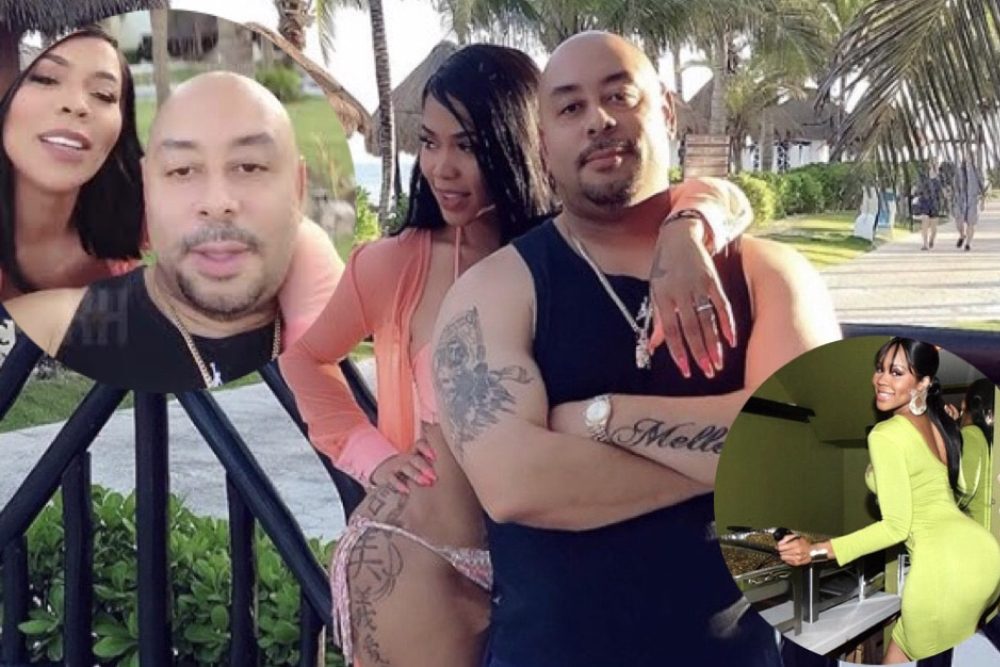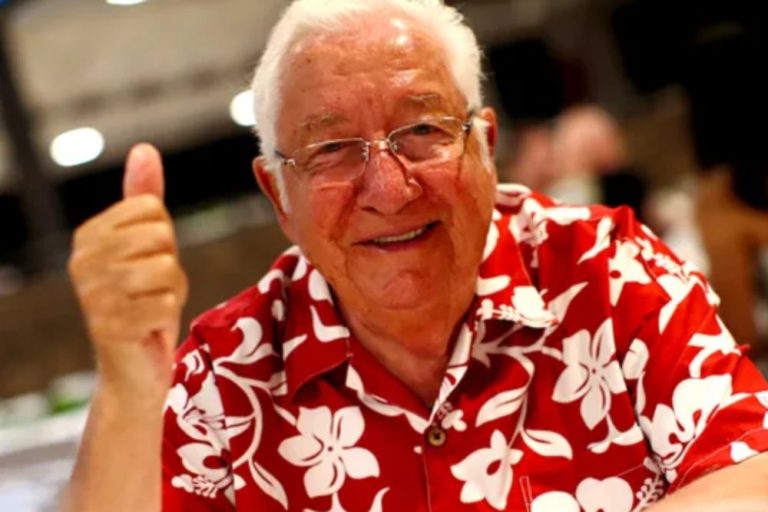Raymond Santana, known for his role in the notorious Central Park jogger case and subsequent exoneration, has led a life marked by both adversity and resilience.
While he may not be a traditional celebrity, his story has captured public attention, and people are often curious about his financial standing.
Here, we delve into Raymond Santana’s journey, his accomplishments, and his net worth

Raymond Santana Net Worth
Raymond Santana’s net worth is around $6 Million. While Raymond has undoubtedly received compensation for his wrongful conviction and subsequent legal battles, the exact financial figure remains undisclosed.
| Full Name | Raymond Santana Jr |
| Birth Date | September 7, 1974 |
| Birth Place | Georgia, United States |
| Profession | Businessman, Producer |
| Marital Status | Divorced |
| Net Worth | $6 Million |
Also Read
Raymond Santana Assets
Raymond Santana’s assets, including a detailed breakdown of his possessions or investments, were not publicly available.
Here are some general categories of assets that individuals may have, and this could include Raymond Santana
Real Estate: Ownership of residential properties, commercial real estate, or other real estate investments.
Financial Investments: Holdings in stocks, bonds, mutual funds, retirement accounts, and other financial instruments.
Compensation for Wrongful Conviction: Raymond Santana and the other members of the Central Park Five received a settlement from the City of New York in 2014.
Business Ventures: Participation in or ownership of businesses, entrepreneurial ventures, or partnerships.
Intellectual Property: Ownership of any intellectual property, such as books, documentaries, or other creative works associated with Raymond Santana’s story.
Personal Possessions: Valuables such as vehicles, jewelry, art, and other personal items.
Raymond Santana Net Worth Growth
| Net Worth in 2024 | $6 Million |
| Net Worth in 2023 | $5.8 Million |
| Net Worth in 2022 | $5.7 Million |
| Net Worth in 2021 | $5.5 Million |
| Net Worth in 2020 | $5.2 Million |
| Net Worth in 2019 | $5 Million |
Raymond Santana’s net worth is influenced by various factors, including earnings, investments, legal settlements, and business ventures.
Given that Raymond Santana is known for his wrongful conviction, subsequent exoneration, and advocacy work
The trajectory of his net worth may have been impacted by several key factors
Legal Settlements: In 2014, Raymond Santana and the other members of the Central Park Five reached a settlement with the City of New York.
The financial terms of the settlement were not publicly disclosed, but any compensation received would have contributed to his financial well-being.
Advocacy and Speaking Engagements: Raymond Santana has been actively involved in criminal justice reform advocacy, sharing his experiences through public speaking engagements, documentaries, and interviews.
While the impact of these activities goes beyond financial measures, they may contribute to his net worth through honorariums and appearance fees.
Media Projects: Any involvement in media projects, such as documentaries, books, or other creative works related to his story, could contribute to Raymond Santana’s earnings and potentially impact his net worth.
Entrepreneurial Ventures: Like many public figures, Raymond Santana may explore entrepreneurial opportunities, including partnerships, endorsements, or business ventures. Such endeavors could contribute to the growth of his net worth.
Investments: Prudent financial management, including investments in various financial instruments or business ventures, could contribute to net worth growth over time.

Raymond Santana Early Life & Background
Raymond Santana’s early life is marked by significant challenges and the life-altering events that unfolded in 1989.
Here are key points about his early life
Birth and Background: Raymond Santana was born on December 18, 1974, in New York City, USA. He spent his early years growing up in the city.
Central Park Jogger Case: In 1989, at the age of 14, Raymond Santana became one of the five teenagers wrongfully accused and convicted in the Central Park jogger case.
The case involved the assault and rape of a female jogger in Central Park. The convictions were later overturned when the true perpetrator confessed, and DNA evidence supported the innocence of Raymond and the others.
Wrongful Conviction and Imprisonment: Raymond Santana, along with the other four teenagers—Kevin Richardson, Antron McCray, Yusef Salaam, and Korey Wise—was wrongfully convicted despite maintaining their innocence. They were sentenced to prison terms ranging from 5 to 15 years.
Exoneration and Release: The Central Park Five’s convictions were vacated in 2002 after Matias Reyes, a convicted rapist and murderer, confessed to the crime.
DNA evidence confirmed his involvement and exonerated Raymond Santana and the other wrongfully convicted individuals.
Life After Exoneration: Following his release, Raymond Santana embarked on a journey of rebuilding his life.
He became a vocal advocate for criminal justice reform, sharing his experiences to shed light on the flaws in the legal system.
Advocacy and Impact: Raymond Santana’s advocacy work includes speaking engagements, participation in documentaries, and raising awareness about wrongful convictions.
His story gained renewed attention through Ava DuVernay’s acclaimed series “When They See Us,” which portrayed the Central Park Five’s experiences.
Raymond Santana Career
Raymond Santana’s life has been profoundly shaped by the events surrounding the Central Park jogger case, his wrongful conviction, and subsequent exoneration.
While his career may not follow a traditional path due to the challenges he faced, he has become a prominent figure in the fields of criminal justice reform, advocacy, and public speaking.
Wrongful Conviction and Exoneration: Raymond Santana’s early years were marred by the wrongful conviction in the Central Park jogger case.
Alongside four other teenagers, he endured imprisonment for a crime he did not commit. The convictions were later overturned in 2002 after the true perpetrator confessed.
Advocacy Work: Post-exoneration, Raymond Santana became a vocal advocate for criminal justice reform.
He has been actively involved in shedding light on the flaws within the legal system and advocating for the rights of the wrongfully convicted.
Public Speaking: One of the notable aspects of Raymond Santana’s post-exoneration career is his participation in public speaking engagements.
He shares his personal story to raise awareness about the impact of wrongful convictions on individuals and their communities.
“When They See Us”: The 2019 Netflix miniseries “When They See Us,” directed by Ava DuVernay, portrayed the Central Park jogger case and its aftermath.
Raymond Santana’s character was portrayed in the series, bringing renewed attention to the injustices faced by him and the other wrongfully convicted individuals.
Criminal Justice Reform: Raymond Santana’s career has been significantly shaped by his commitment to advocating for reforms within the criminal justice system.
His experiences serve as a powerful narrative to highlight the need for changes to prevent wrongful convictions.
Media Appearances: Raymond Santana has appeared in various media outlets, including interviews, documentaries, and discussions related to criminal justice issues. These appearances contribute to the broader conversation about systemic injustices.
Impact on Policy and Awareness: Through his advocacy, Raymond Santana has contributed to raising awareness about the flaws in the legal system.
His work may have also influenced discussions and initiatives aimed at policy changes to prevent wrongful convictions.

Raymond Santana Personal Life
Raymond Santana’s personal life has been deeply affected by the significant events surrounding the Central Park jogger case, his wrongful conviction, and subsequent exoneration.
While he has been active in sharing his experiences and advocating for criminal justice reform, details about his private life may not be as extensively documented.
Here are some aspects related to Raymond Santana’s personal life
Early Challenges: Raymond Santana faced immense challenges in his early life, particularly during the period of his wrongful conviction.
The experience of being wrongfully accused and imprisoned at a young age had a profound impact on his personal and emotional well-being.
Impact of Wrongful Conviction: The wrongful conviction and imprisonment undoubtedly had a lasting impact on Raymond Santana’s personal life.
The trauma associated with such an experience can affect mental health, relationships, and overall life perspectives.
Advocacy as a Personal Mission: Raymond Santana’s personal life has become intertwined with his mission for criminal justice reform and advocacy.
His dedication to raising awareness about wrongful convictions reflects a personal commitment to preventing others from enduring similar injustices.
Media Portrayal: The portrayal of Raymond Santana in Ava DuVernay’s series “When They See Us” provided a public lens into the personal struggles he faced during and after the wrongful conviction. The series offered a glimpse into the emotional toll the events took on him.
Resilience and Transformation: Despite the challenges, Raymond Santana’s personal life showcases resilience and transformation.
His ability to overcome adversity and channel his experiences into advocacy demonstrates a personal strength that goes beyond the injustices he endured.
Role as a Public Figure: As a public figure, Raymond Santana’s personal life intersects with his public persona.
While he shares aspects of his story to raise awareness, the choice of how much to disclose about his private life remains within his control.
Positive Contributions: Raymond Santana’s personal life is marked not only by the hardships he faced but also by his positive contributions to the broader societal conversation about criminal justice reform.
Raymond Santana’s advocacy work contributes to the collective effort to bring about meaningful change.
Conclusion
Raymond Santana’s journey from wrongful conviction to exoneration serves as a powerful reminder of the flaws in the criminal justice system and the resilience of the human spirit.
Raymond’s impact transcends monetary measures. His advocacy work continues to drive meaningful change, making a difference in the lives of countless individuals affected by injustice.
FAQs
What is Raymond Santana’s net worth?
Raymond Santana’s net worth is around $6 Million. While Raymond has undoubtedly received compensation for his wrongful conviction and subsequent legal battles, the exact financial figure remains undisclosed.
How did Raymond Santana earn his money?
Raymond Santana’s earnings may come from various sources, including legal settlements related to the wrongful conviction, compensation for media appearances, public speaking engagements, and potential advocacy work.
Did Raymond Santana receive compensation for the wrongful conviction?
Yes, Raymond Santana and the other members of the Central Park Five reached a settlement with the City of New York in 2014.
Is Raymond Santana still involved in advocacy work?
Raymond Santana continues to be actively involved in advocacy work. He participates in public speaking engagements, media appearances, and other initiatives to raise awareness about wrongful convictions and criminal justice reform.
How did the Netflix series “When They See Us” impact Raymond Santana’s career and net worth?
The Netflix series directed by Ava DuVernay, “When They See Us,” brought renewed attention to the Central Park jogger case and Raymond Santana’s story.





